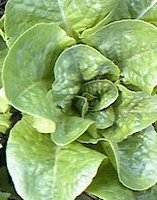
Unexpected Snowstorm Causing Computer Breakdown
The algorithms that govern the computer-controlled environment of our greenhouse were developed under the supervision of Dr. Louis Albright, professor of agricultural and biological engineering at Cornell University in upstate New York.
His brilliant scheme involves running the lights, the Nutrient Pond, the heating, the cooling, the sun shading, the solenoid cells measuring the amount of sunlight—in other words the whole enchilada—off the same master program on our state of the art super-server running Linux as an operating system.
Being a Windows acolyte, while Chuck is of the Mac persuasion, we had to hire a knowledgeable individual to set up our Linux system and to show us how to run it, tweeking it when necessary. We taped his business card to the side of the server, with his cell number highlighted in green.
Green being the color of hope, and also that of lettuce, we figured that we could handle any minor glitches on our own, while for the major ones our Linux genius would be at the other end of a cell phone.
Then came the snowstorm of a few days ago. The computer system managed to survive the invasion of murky water and the subsequent power outage. However, when the unexpected snowstorm dumped an unprecedented two feet of snow onto our Quinset-hut type greenhouse, our Linux system, nicknamed Linus by Chuck, got totally garbled and confused.
Being the practical member of our partnership, I made sure that backup measurements could be taken of the vital signs of our hydroponic lettuce operation. Old fashioned mercury thermometers took the temperature in the greenhouse as well as that of our Nutrient Pond. The digital ones that were hooked up to the computer only showed gobbledygook.
Chuck ran around taking pH readings at different points in the Pond and manually administered a small amount of pH Up in order to correct the acid alkaline balance. I took light readings with a cinematic light meter and adjusted our lighting according to my readings.
Figuring that our lettuce could use an extra boost of immunity, I mixed up a new batch of nutrients, headed by Barricade, a potassium silicate product made by Advanced Nutrients. It strengthens the cell walls of plants and stimulates their immune systems.
I also included Calcium Mg Mix Grow, as well as Mother Earth Super Tea Grow, to fortify our lettuce plants with chelated calcium, magnesium, as well as easily absorbed 100% organic nutrients, that serve the same function as a herbal tea on a cold, winter night.
The Hot Water Boiler had to be run manually, as well, while I put Mr. Linux on speed-dial and bombarded his voice mail with my loud pleas for help.
The polyethylene covering of the greenhouse started to sag under the weight of all that snow. Even though the roof is curved, the snow stuck to it—it was an extra adhesive variety.
Luckily, this type of emergency was anticipated in the design of the structure, so all we had to do was to heat up the forced air in-between the two layers of polyethylene and when it reached the optimum temperature, the snow just slid off the roof and its sides.
The new seedlings had to get an extra treatment with No Shock, and Wilt Stop, since the automatic system failed to deliver their nutrient solution to their holding tanks on time. I also immersed all of them in Scorpion Juice, in order to impart induced systemic resistance, which wards off all sort of pathogens.
After running the greenhouse on manual for the whole afternoon, Mr. Linux was rousted up and spent a couple of hours fixing and recalibrating the automatic system. Afterwards, we presented him with his very own pager, so that when he’s away from his cell phone, he will still be reachable by these intrepid lettuce growers.
Then we had to deal with the delays that the heavy snow caused in our delivery schedules. As the tardy trucks arrived to pick up their daily load of hydroponically-grown Boston lettuce, we slapped chains on their tires so they wouldn’t have any excuses for being late next time.
posted by silvio @ 10:33 PM
0 comments
![]()




